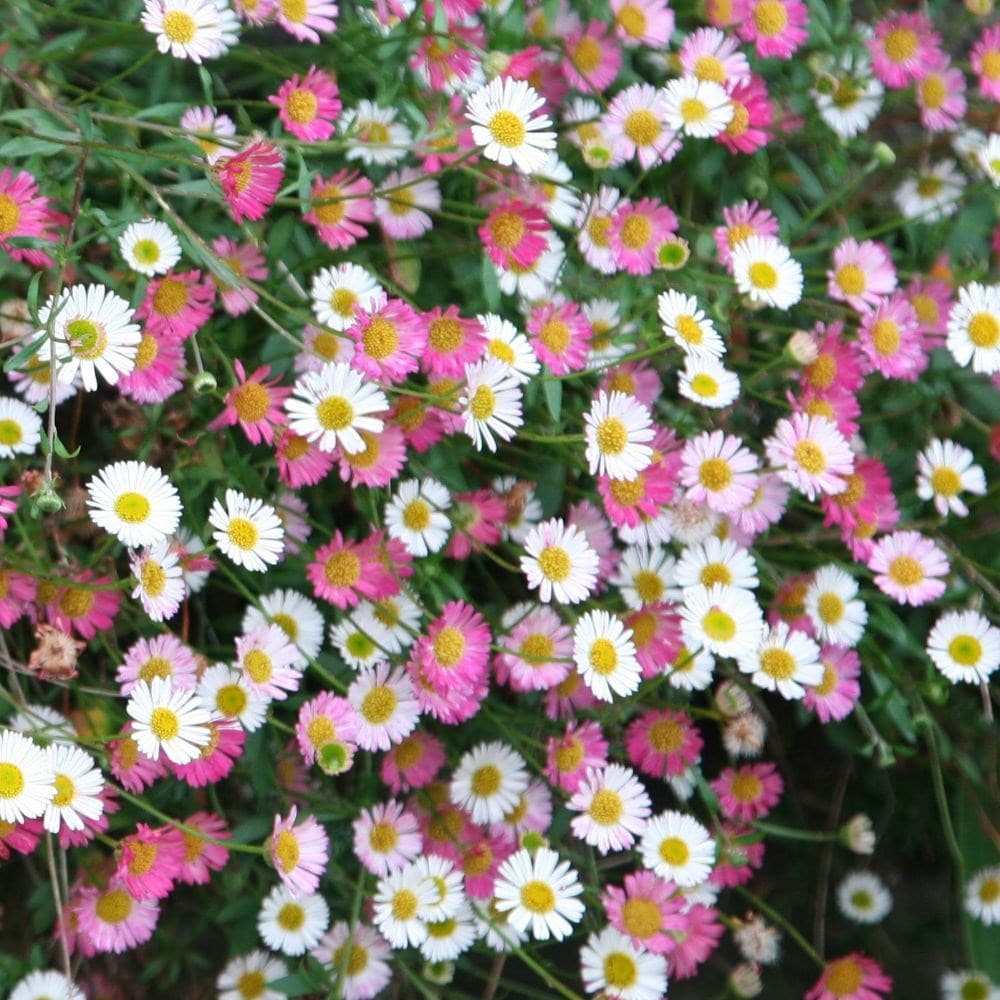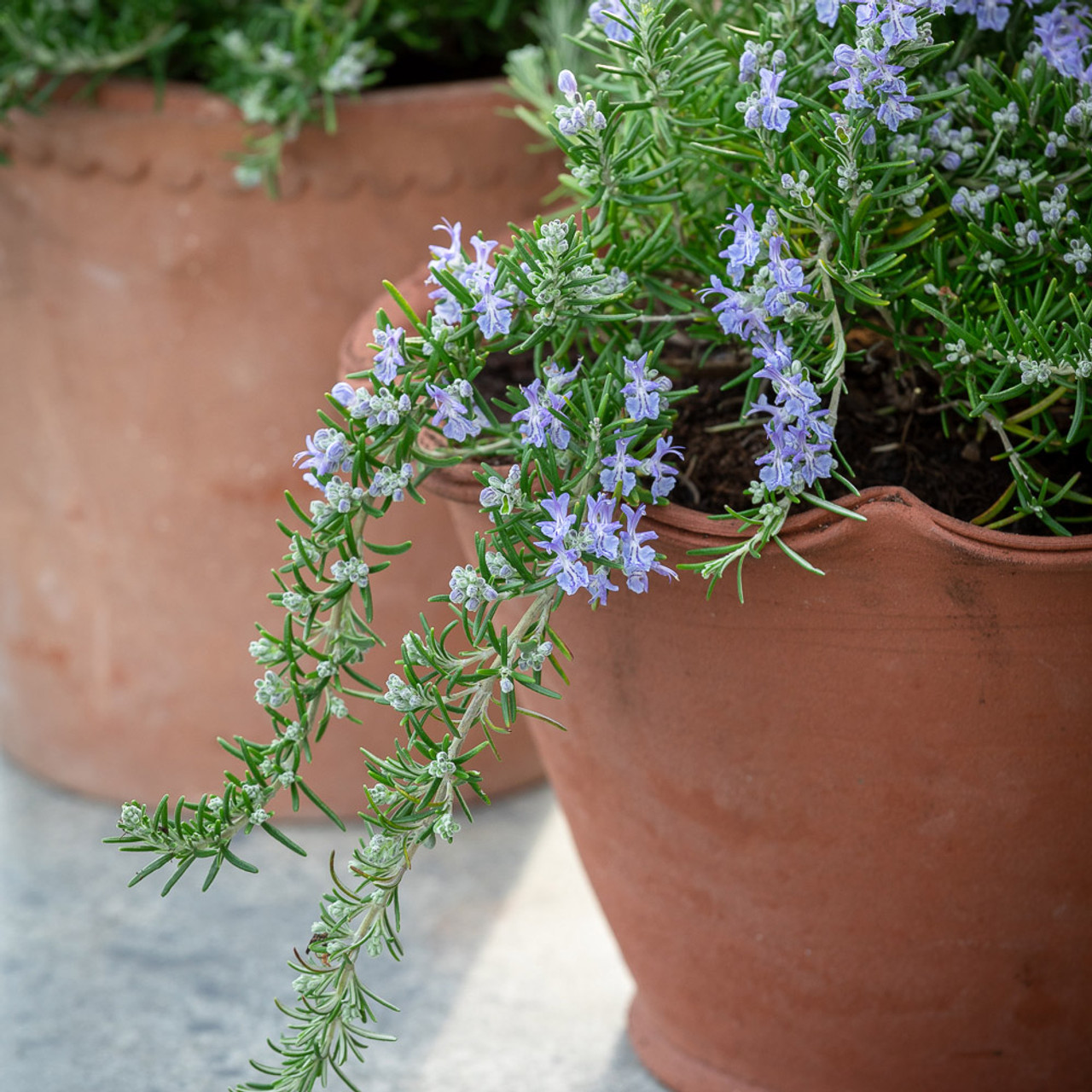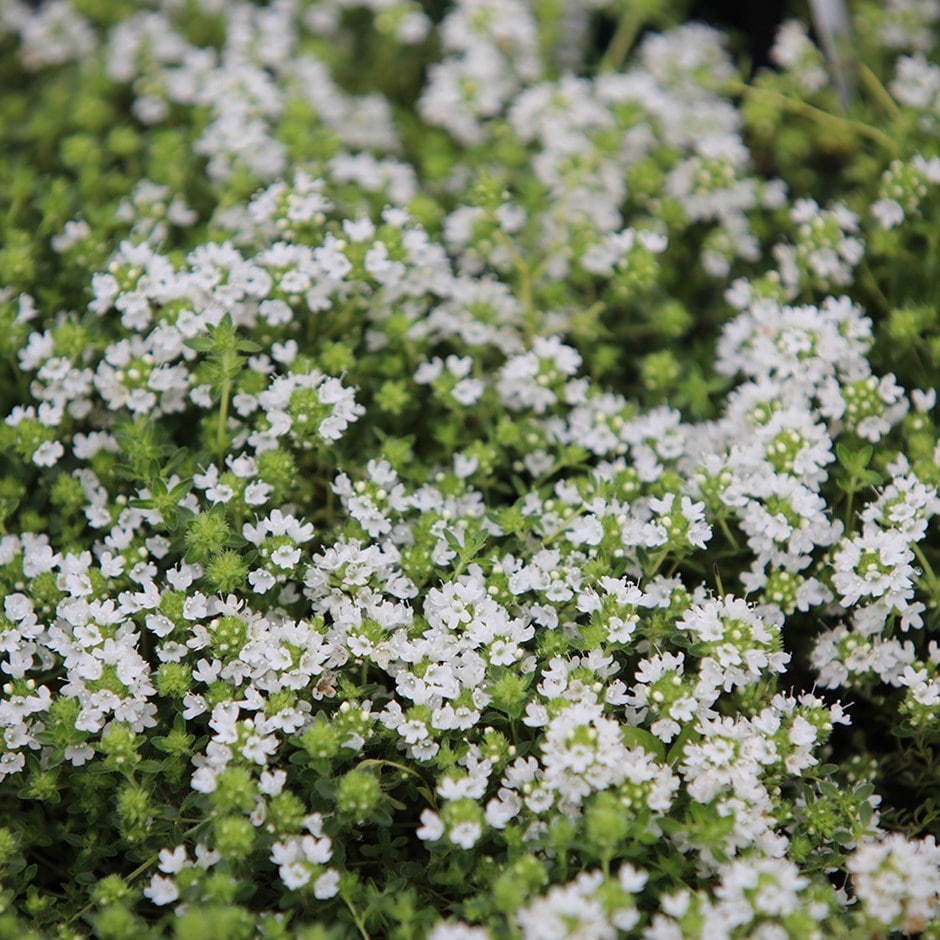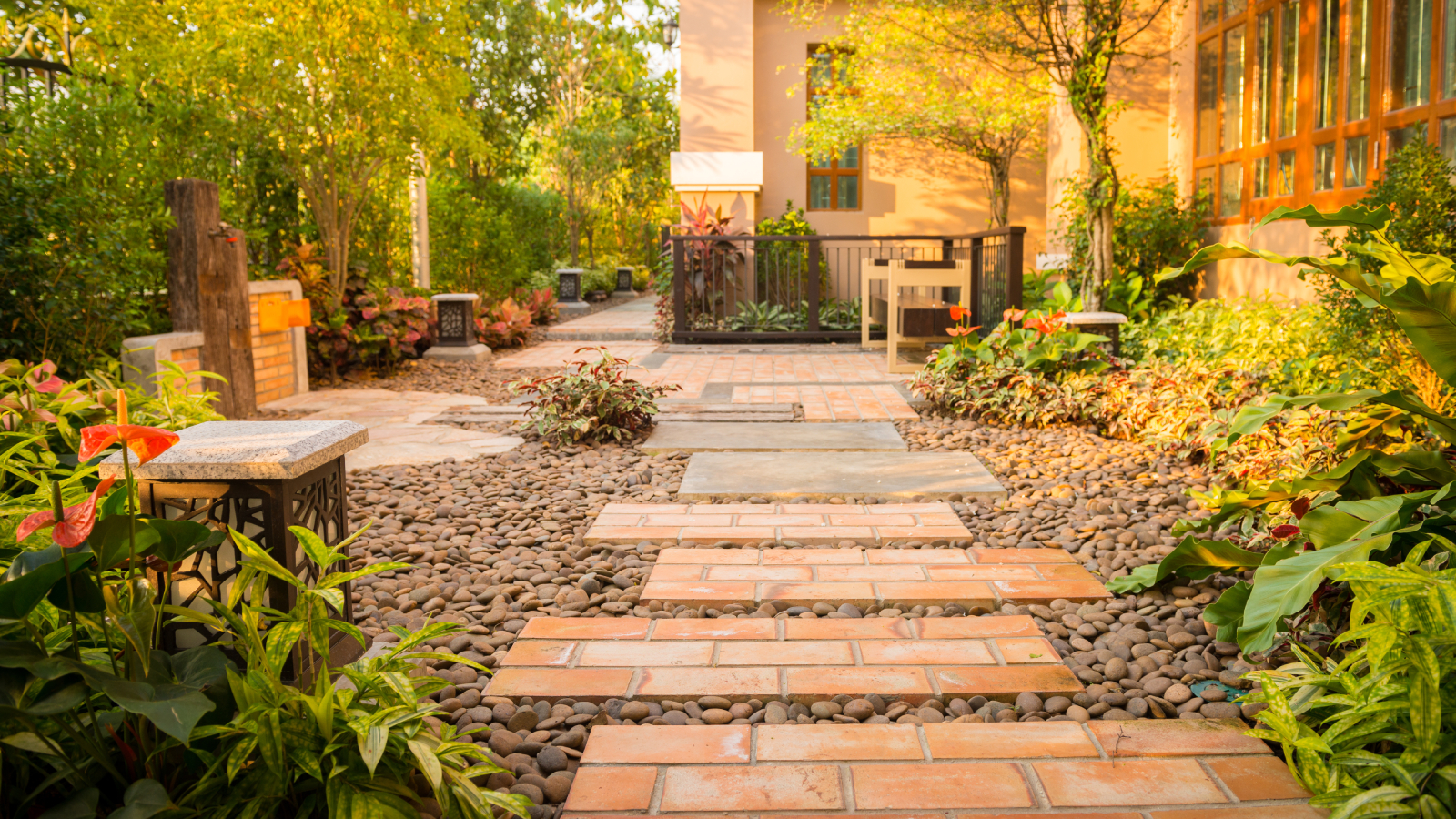8 front garden wall ideas that blend style and practicality
Get inspired by these clever front garden wall ideas to make your design dream a reality
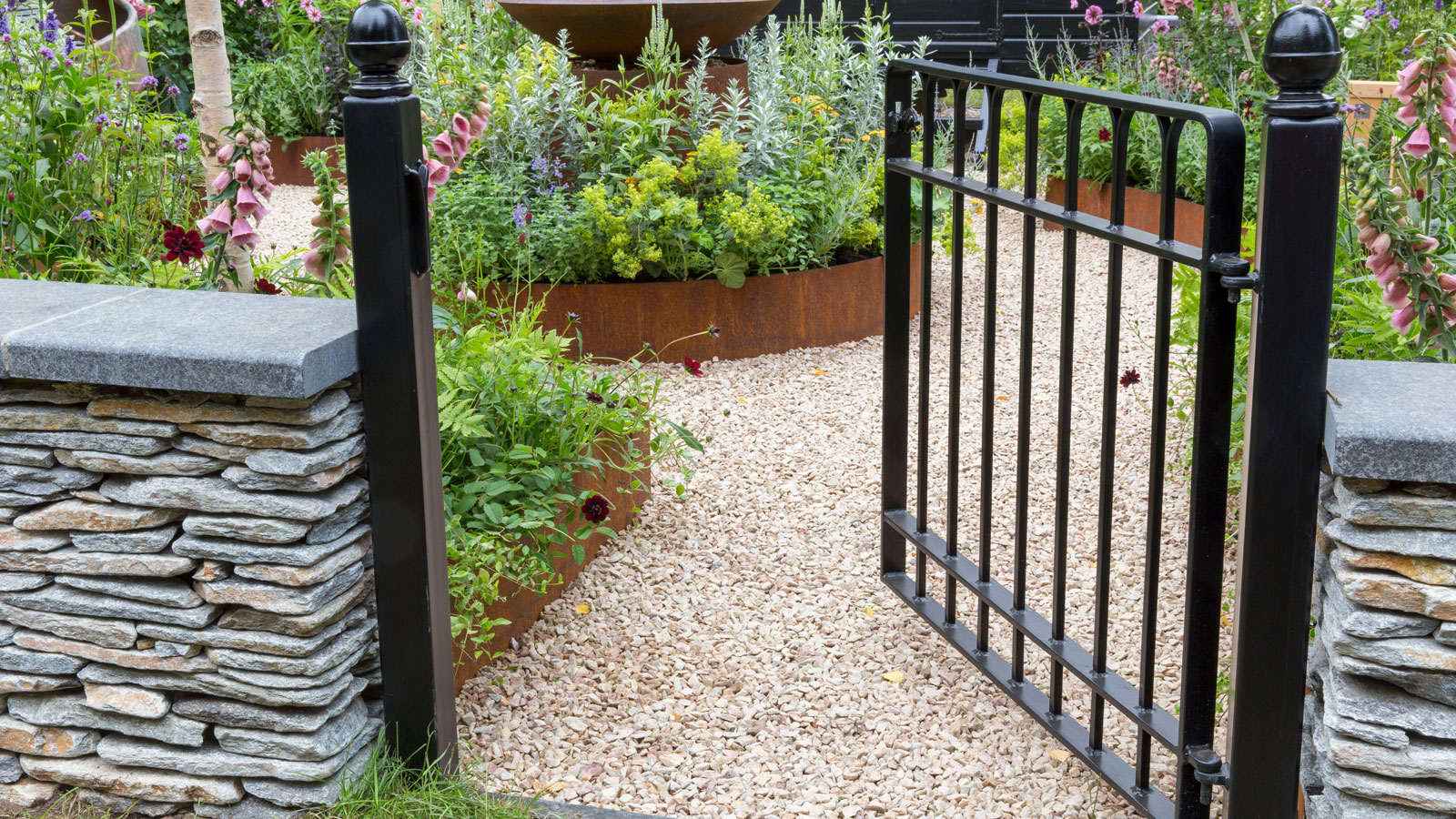
As well as addressing practical considerations like privacy, security and defining boundaries, front garden wall ideas can be used to add a stylish design feature to your property. Combined with other landscaping ideas such as paving, planting and gravel this will help to boost kerb appeal.
When deciding what style of garden wall works best for your front garden remember that a coherent design throughout the whole space is everything. Your preferred idea should work with the exterior of the house too. If you're planning a complete front garden redesign this is easily achievable as you're starting from scratch.
If you're looking at more of a makeover as part of your garden wall ideas be sure to enhance the colour, texture, and style of any existing elements in your front yard by introducing a garden wall that is sympathetic to the current design.
We asked landscaping experts for their suggestions on inspirational garden wall designs and here's what they had to say.
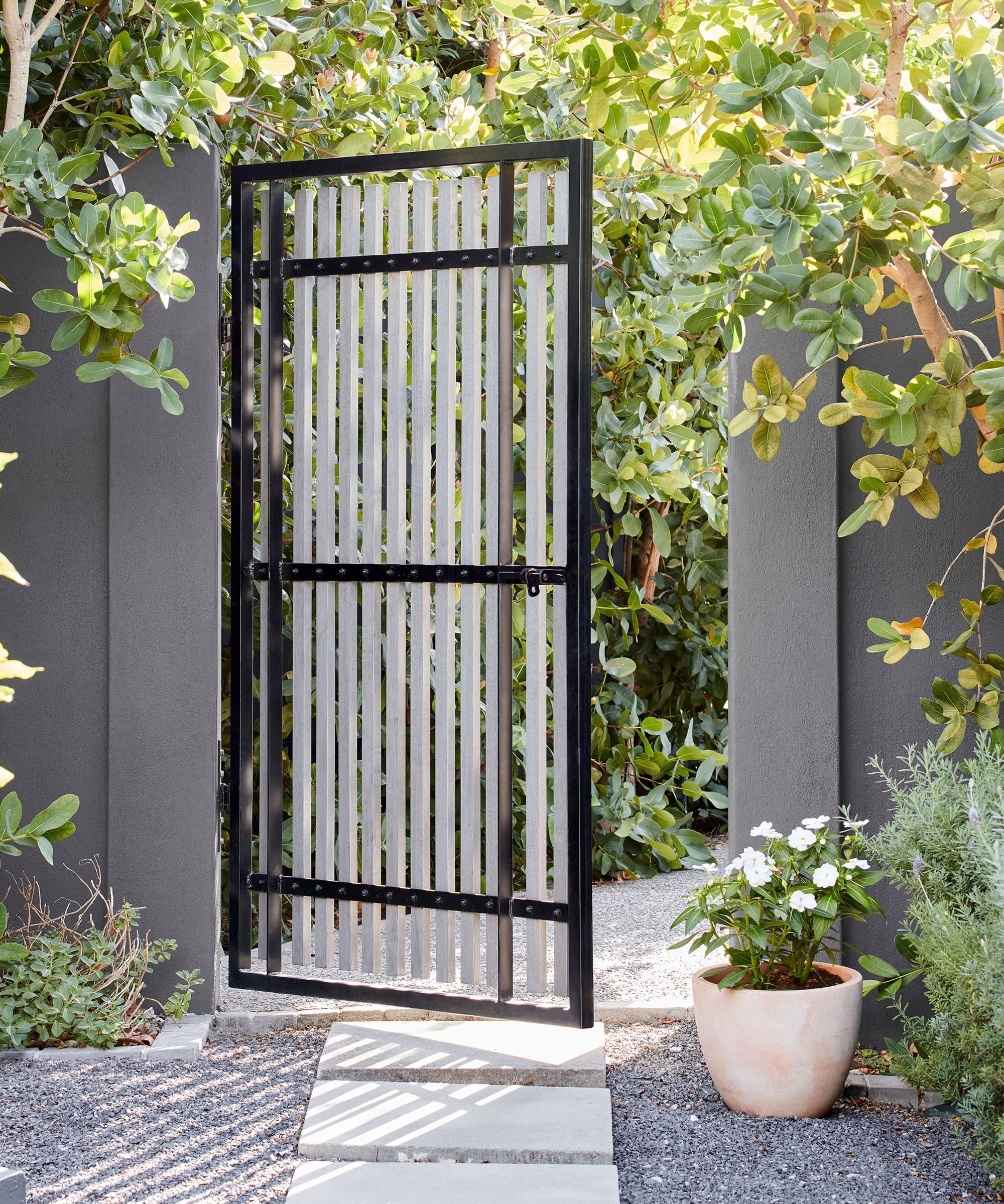
1. Choose a harmonious design
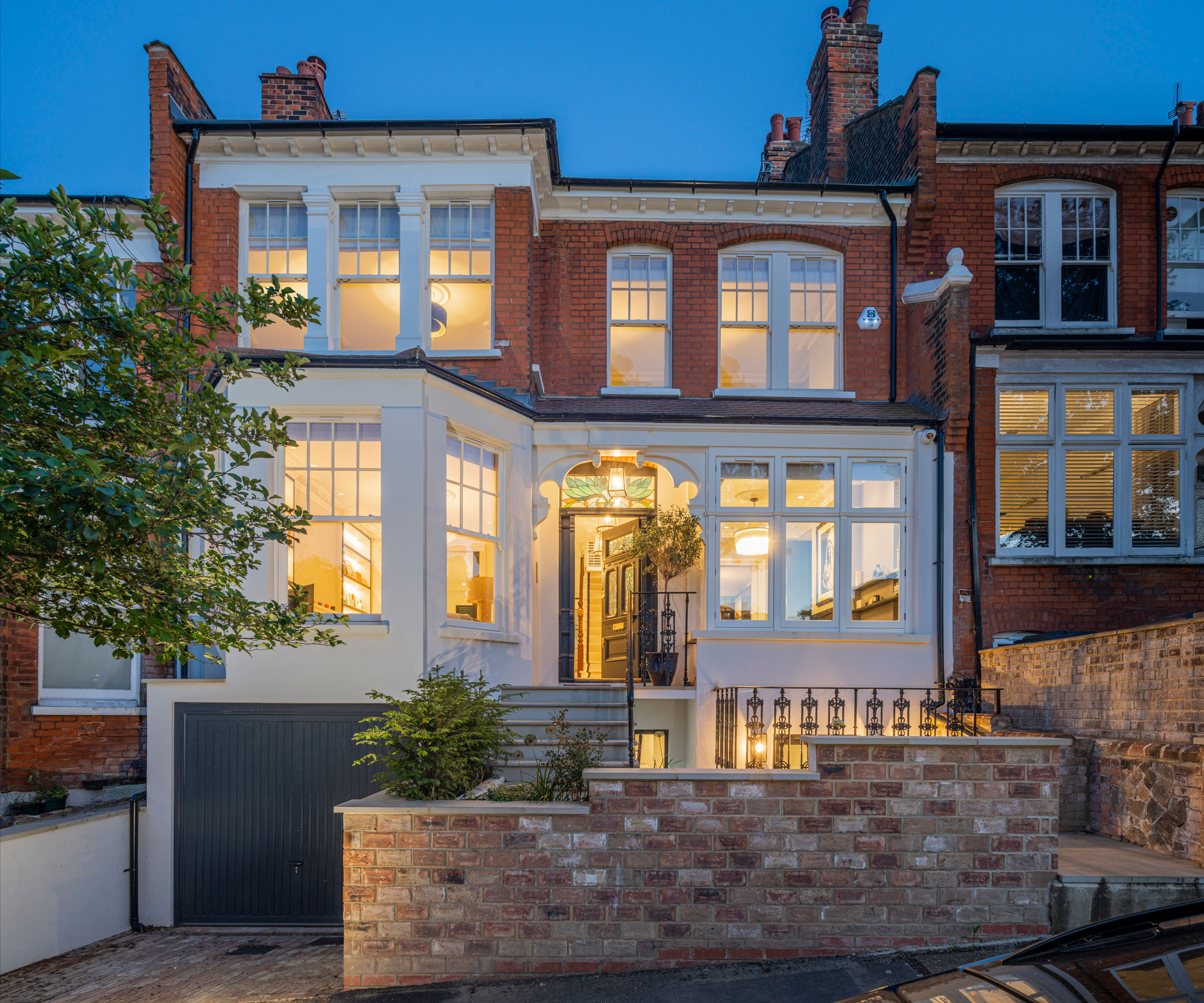
When choosing front garden wall ideas opt for materials that are sympathetic to the property or design of the front garden. "For period properties, using exposed heritage bricks and more traditional coping materials such as Yorkstone, Portland limestone, and riven natural stone works well," explains Steven Walley, garden design expert at London Stone.
“This front garden wall provides privacy from the road and incorporates planting within the design, softening the overall look," says Steven. "The design is built with London Stone bricks, helping it sit in harmony with the period property’s features and architectural style. Coping stones sit on top of the wall to add to the aesthetic appeal. This also helps to stop water ingress into the wall."
For homes with a more modern design, or designs where the brickwork will be covered, find out how to render a garden wall. According to Steven, white rendered walls or porcelain-clad walls work well, and can be built from concrete or cement blocks.

Steven Walley is Managing Director of landscape paving suppliers London Stone. He set up the company with his two brothers in 2006 after a career as a hard landscaper, and is now an industry expert on hard landscaping and paving materials.
2. Use a statement wall as a backdrop to planting
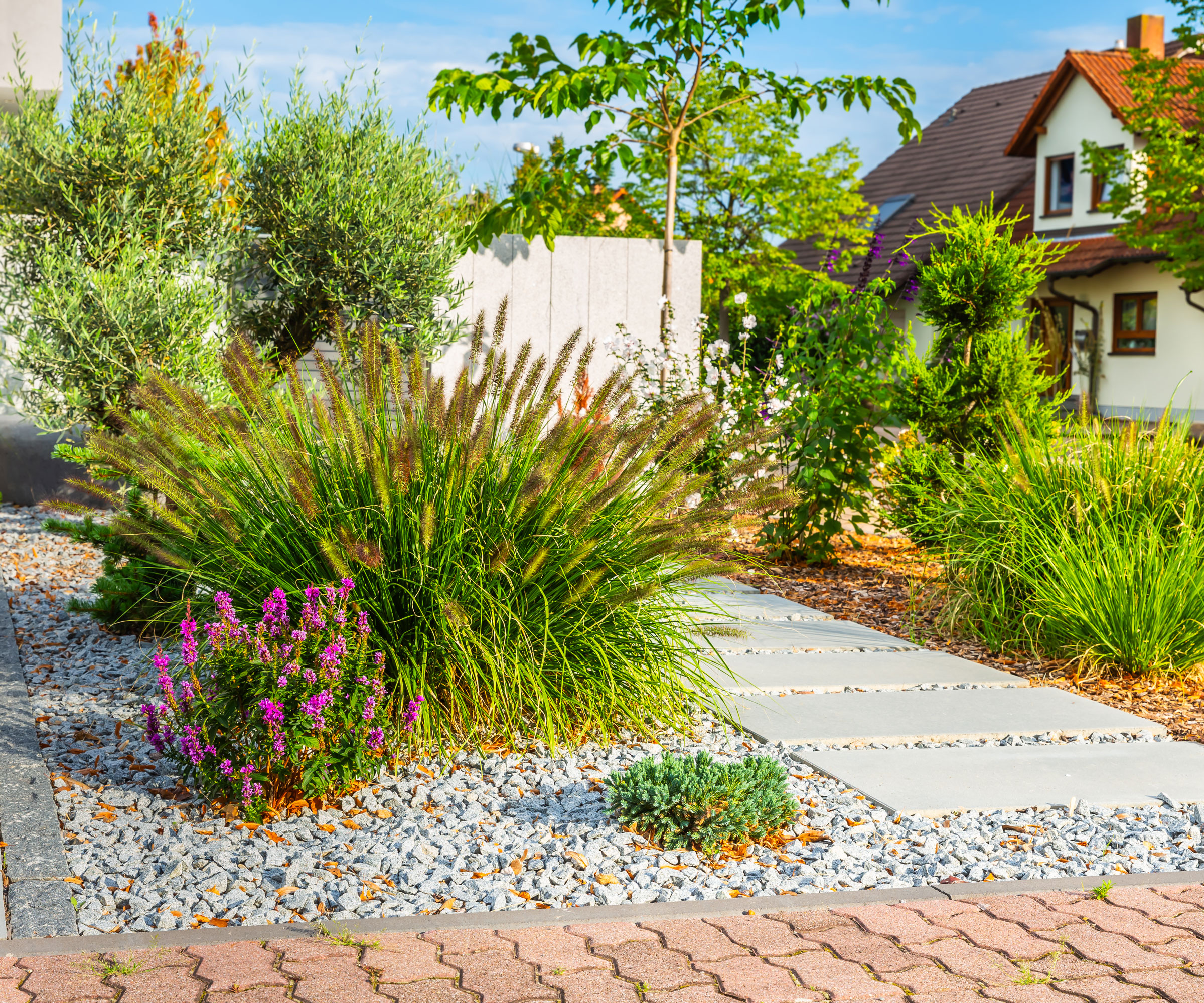
Adding a freestanding wall as part of your front garden ideas can be useful as a backdrop to stage planting. Tall feature walls help to elevate the overall design of the front garden too by creating a statement and becoming an object of beauty in their own right.
Apart from providing a surface for plants to grow up and against, walls also retain heat which means they create a warm and sheltered microclimate. This is especially useful if you like the idea of growing tropical plants in your front garden, or if you're interested in low-maintenance dry garden designs combined with plants for gravel gardens.
This type of look works best with a smooth rendered block wall colour-washed in a soothing neutral shade, as this design shows, to enhance planting such as shapely trees and ornamental grasses.
3. Extend an existing wall with matching materials
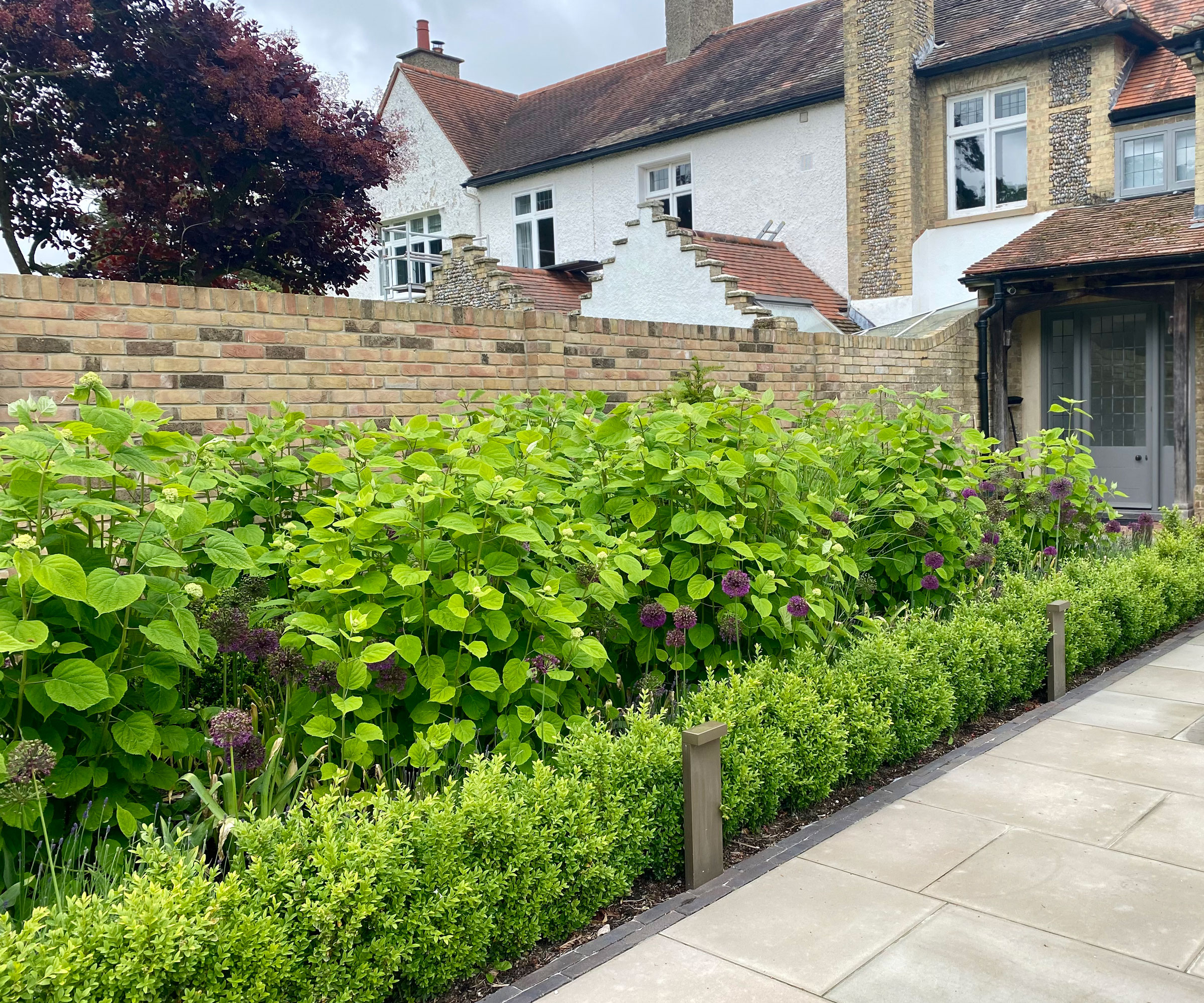
"The brief for this garden did not include changing any of the boundary treatments but I felt the existing fence panels were not in keeping with the property and would need to be removed," says garden designer Mia Witham of Forma Landscapes.
"There was already a section of a brick wall linked to the property separating the garden from the neighbour so it made perfect sense to match the brick and extend this wall the full length and replace the fence panels."
Brick walls are ideal for properties where bricks are already used and it's important to match the brick. "I work with the architects to identify the best building material to match," explains Mia. "If it's an old property then it's likely the building material is from a local source. If I don't have any luck finding one then I use Wienerberger or Vande Moortel."

Mia Witham is an award-winning landscape and garden designer, and the owner of Forma Landscapes. She has a passion for plants and works both in the UK and abroad on a wide range of projects. Mia seeks inspiration from nature where she studies plant communities, the shapes and forms of plants, and how they combine.
4. Consider bespoke design elements

For a touch of individuality, consider bespoke design elements as part of your front garden wall ideas. Metal railings, decorative gate details, and statement gate furniture can inject personality into what is often an overlooked feature, transforming a functional garden wall boundary into a design highlight.
This beautifully crafted brick wall provides privacy, security, and a sense of permanence while enhancing the elegance and character of the property. It also defines the space, marking a clear boundary that complements both home and garden.
"When choosing materials, consider drawing inspiration from the existing architectural details of your property," advises garden designer Karen McClure of KMGD. "The brickwork, colour palette, and laying pattern can all inform your design, ensuring a seamless connection between house and landscape. Small details, such as decorative tiles or contrasting mortar, can subtly enhance the aesthetic, while adding kerb appeal and value to your home."

Karen McClure has successfully grown KMGD from her passion for the landscaping industry. She is a fully accredited member of the Society of Garden and Landscape Designers (SGLD). The driving force behind KMGD, Karen continues to learn, develop and grow her company, to provide clients with the best garden designs.
5. Work up a wall idea to suit a modern design
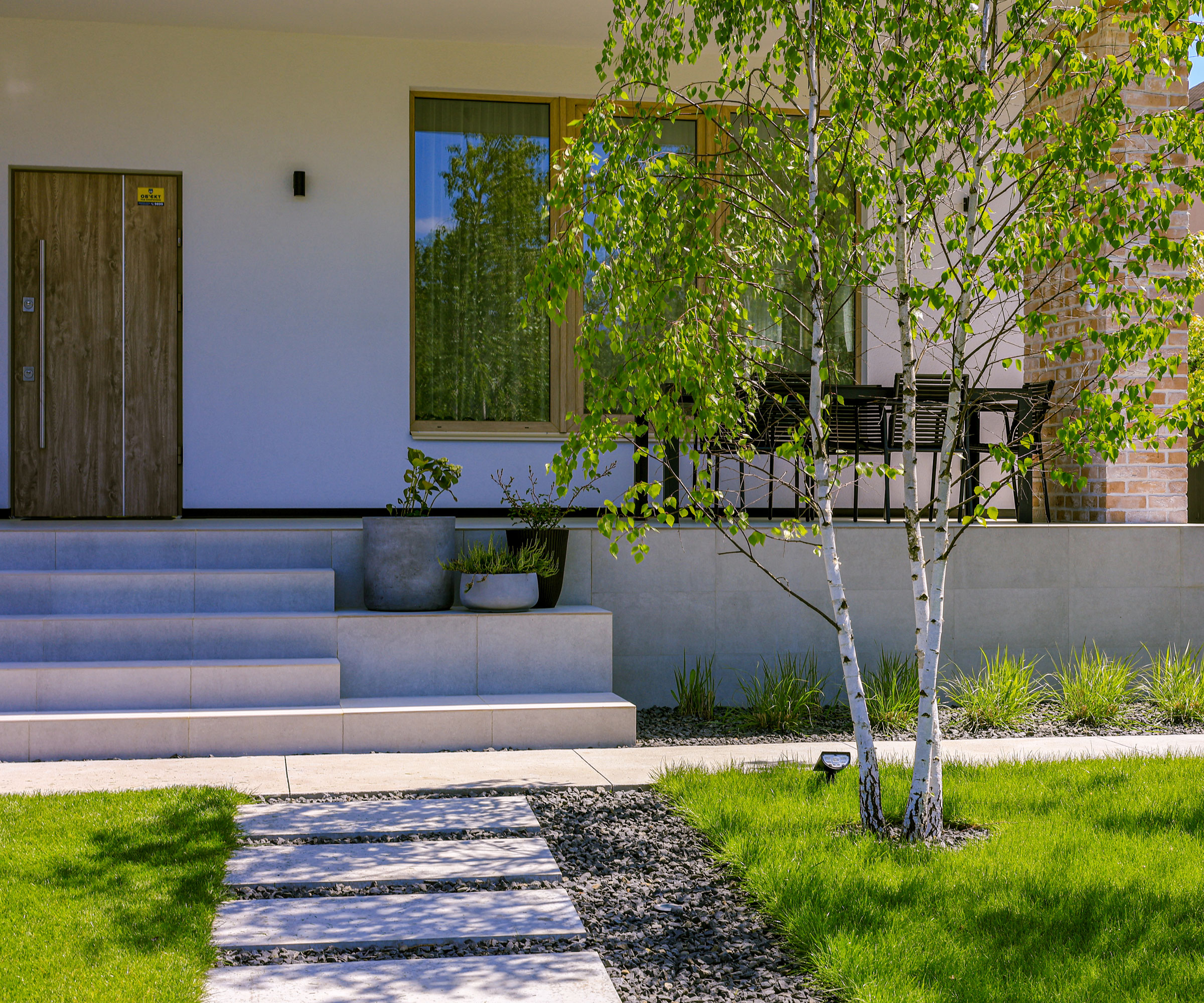
Poured concrete or block plaster front garden wall ideas can be used to blend seamlessly with modern house design. Modern front garden wall ideas are all about keeping it simple and sleek. A monochromatic colour scheme in black, white or grey works best if you are aiming for a minimal aesthetic.
When deciding on garden walls to match, or in some way echo, the design of a modern property, use the best quality of material that budget will allow. Concrete block walls are worth considering where budget is an issue. They may be rendered and painted, and can be used in a variety of ways to imitate stone.
This is a great example of how a low garden wall can have just as much impact as taller ones, becoming a focal point in its own right.
6. Use a garden wall to disguise the bin area
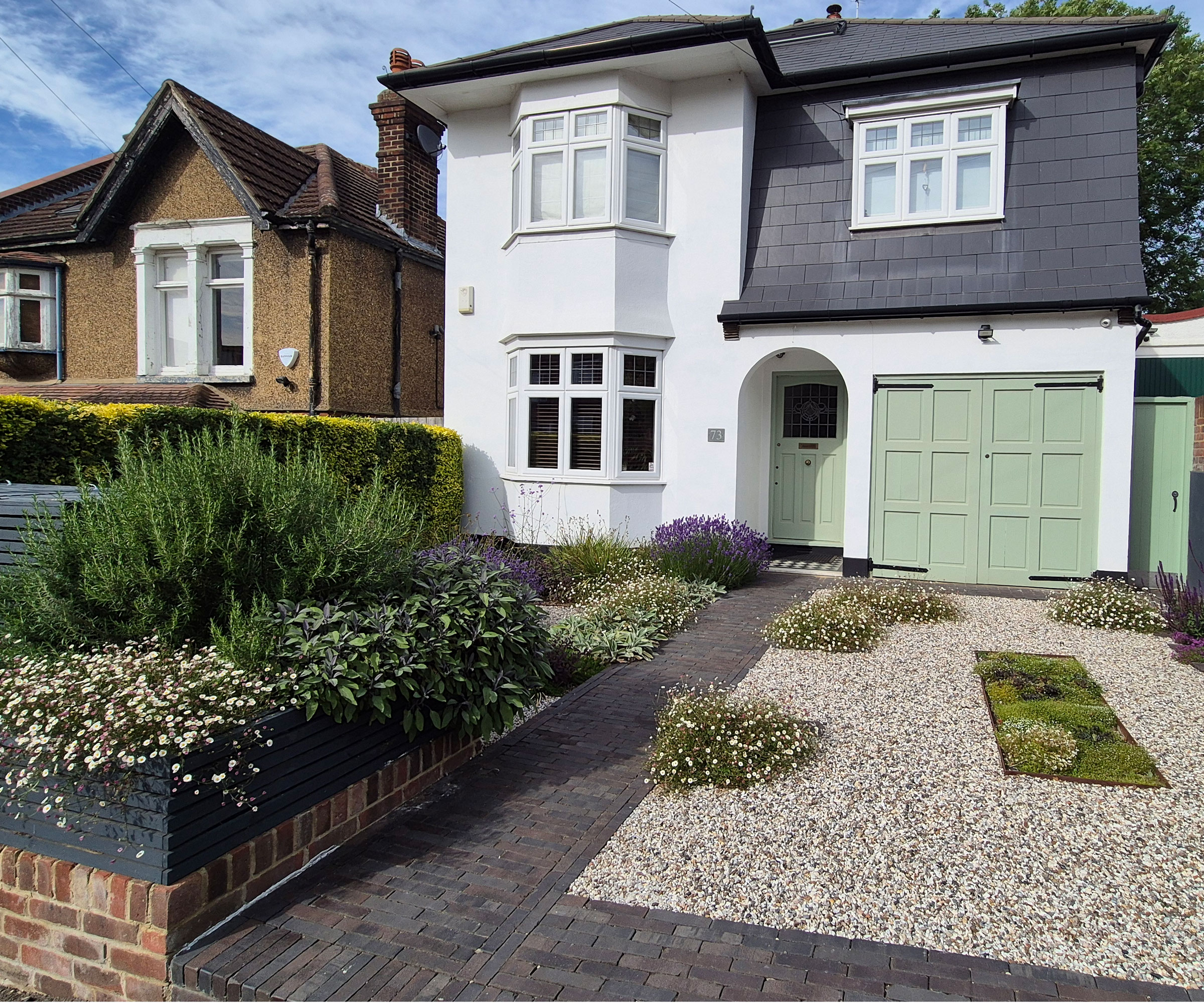
The ubiquitous wheelie bin tends to be a blight on the urban landscape, so using front garden wall ideas to screen them from view is definitely a move in the right direction if you want to boost kerb appeal by hiding them away.
"This front garden wall and planter was designed in order to partially conceal a bin store, allowing space for soft and plentiful planting to fill and spill over it," says architect and garden designer Catriona Rowbotham. The planting was chosen to suit the dry sunny position of this front garden as well as being low maintenance. It includes Mexican Fleabane, rosemary and sage.
"Both the bin store and the wall were carefully built to a bespoke design by Bes Landscapes. The bricks were recycled from the original brickwork wall replaced by this design."
The painted timber top to the wall provides a visual connection to the painted timber bin store behind and is also painted in the same shade as the lower rendered portion of the side boundary wall. This helps to pull together the whole design. "Both the dark grey paintwork and red brickwork tones were then picked up in the new clay paver pathway and decorative strips between the planting to the side of the permeable gravel driveway, creating cohesion over the whole front garden design."

Blending her architectural expertise with a passion for gardening, Catriona Rowbotham's design journey began with Gaia Architects Scotland. Later she was inspired by her time with Dominique Perrault in Paris, and her work for leading architectural design practices in London. Seeing firsthand the demand for garden design through her architectural projects, she trained at The English Gardening School, and her career pivot became final after winning a public courtyard design competition in 2021.
Shop plants to grow near garden walls
7. Integrate a practical raised bed into your wall design
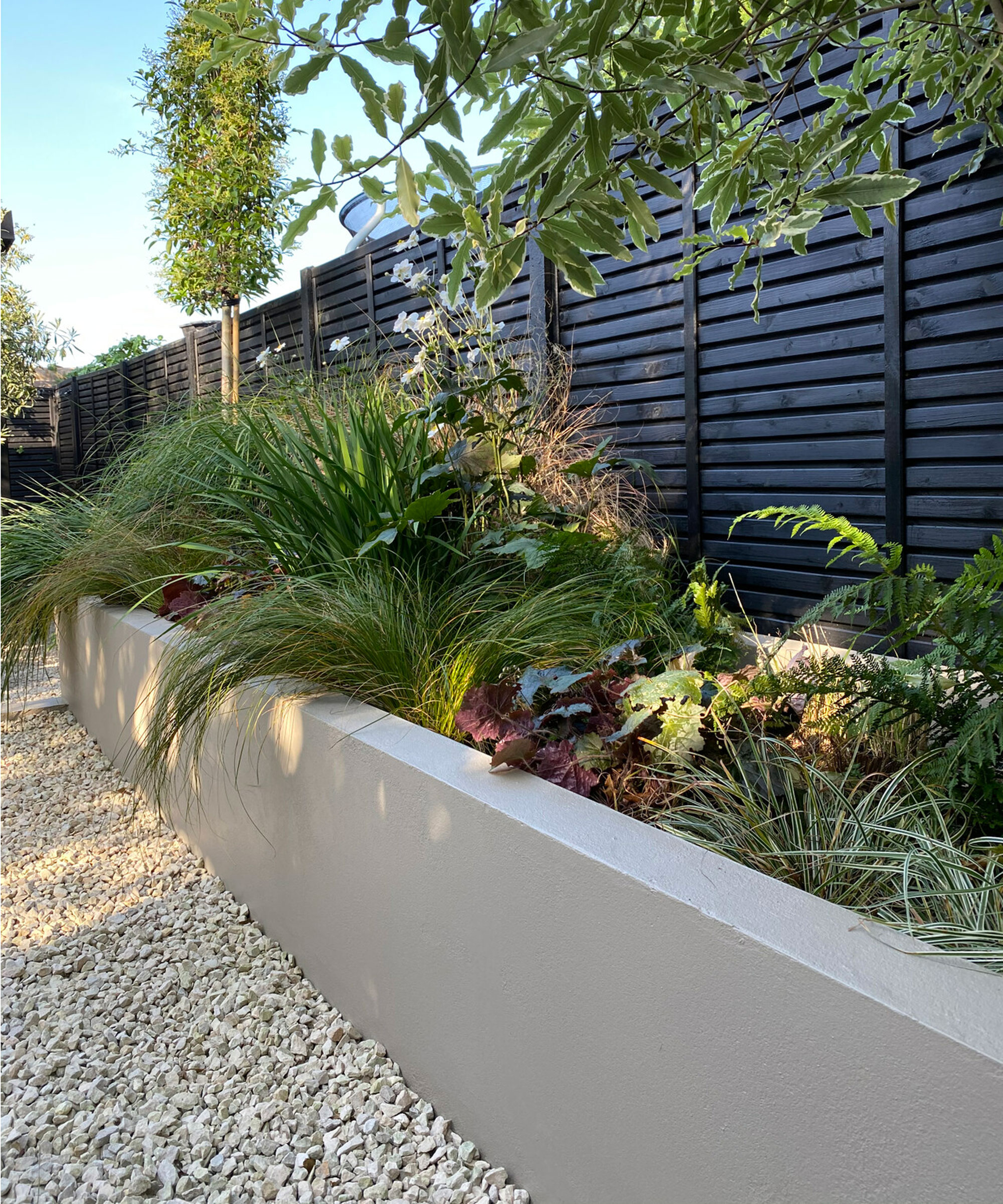
Using raised garden bed ideas for a front garden wall design is a great way of keeping planting contained in one area in a neat and practical way that's easy to manage and looks high end. As well as offering an attractive option for front garden wall landscaping, raised beds are much easier to maintain due to their height.
Using raised beds as part of front garden wall ideas is also a creative way of landscaping a terraced garden to add interesting planting to the layout. You can grow most plants in raised garden beds, even shrubs and small trees.
There are lots of materials that can be used to make raised beds. They can be made of hardscaping materials like concrete or brick, as well as recycled wood or galvanized metal. They are a design feature that can break up space, add interest and create a boundary that looks aesthetically pleasing.
If you're in a dilemma about whether to choose a fence or wall a design like this one gives you the best of both worlds.
8. Choose a traditional method like dry stone walling
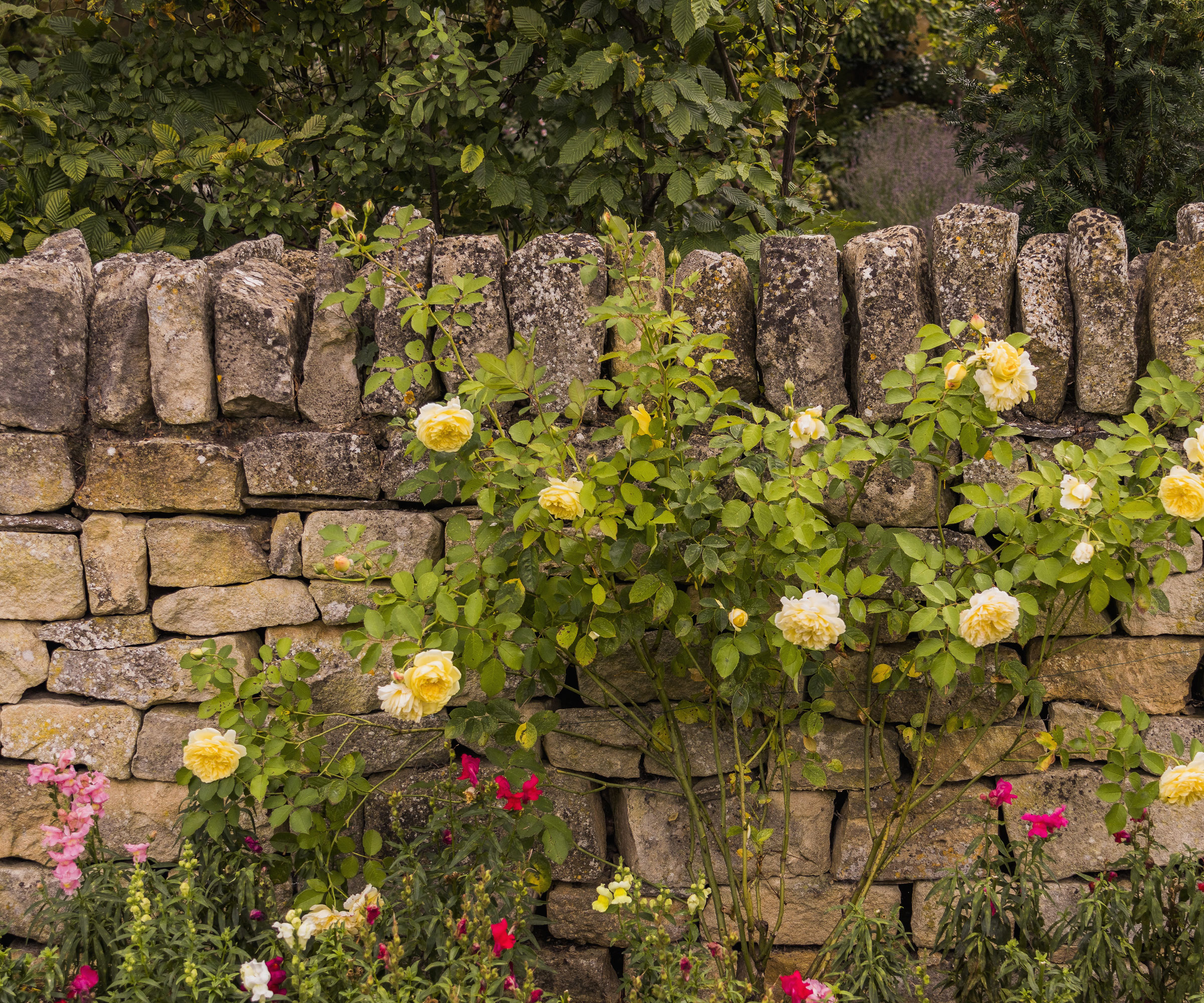
If you decide to go for traditional front garden wall ideas local stone will probably be the most appropriate material to use. If you choose local limestone or sandstone, the stones may be similar enough in size to fit easily together in layers.
"A dry stone wall is built wide so that 'hearting' or filling stones can be used to fill gaps between larger facing stones," explains garden designer Susan Young, who is currently working on a dry stone wall project. "These smaller stones help to bind the wall together. Larger ‘through stones’ are placed at intervals as the wall is built up."
Traditionally, stone walls were built dry, without mortar to hold them together. The largest stones are usually put at the foot of the wall, as well as on the corners. Cock ‘n’ Hen capping stones are a traditional way to finish dry stone walls, combining protection and an aesthetic element.

Susan trained in horticulture and design with Writtle College at Shuttleworth, holds the Royal Horticultural Society’s Diploma with a Commendation, is a member of the Professional Gardeners’ Guild, and takes CPD with the Society of Garden Designers. Susan worked as a gardener at Tofte Manor in Bedfordshire, and since 2007 has worked as a gardener at Cranford Hall in Northamptonshire.
FAQs
What planning considerations need to be taken into account?
“When it comes to planning considerations, always check with your local planning authority before committing to any work, as planning can vary by area," suggests Steven Walley. "Generally, you don’t need planning permission to build a wall under 2 metres in height, but this can vary depending on whether the wall is next to a highway, or if your property is listed."
According to Steven building regulations may apply if the wall is supporting a structure such as fencing or railings, or if the wall is on sloped ground or supports retaining soil. "It can be beneficial to involve the services of a structural engineer to ensure that the wall is structurally sound.”
Karen McClure adds that it's particularly important to use the right building materials in conservation areas to maintain the historic character of the surroundings.
Make sure you check out more advice on garden design and planning a new landscaping scheme before you start any work on front garden wall ideas. It's also worth looking into budget landscaping ideas if you want to achieve a high end look without overspending.
Get the Homebuilding & Renovating Newsletter
Bring your dream home to life with expert advice, how to guides and design inspiration. Sign up for our newsletter and get two free tickets to a Homebuilding & Renovating Show near you.

Lifestyle journalist Sarah Wilson writes about flowers, plants, garden design and gardening trends for Homes & Gardens. She has studied introductory garden and landscape design and floristry, and also has an RHS Level 2 qualification in the Principles of Plant Growth and Development. She is a regular contributor to Homes & Gardens and Livingetc. She has also written for Real Homes, Modern Gardens, Country Living, and Country Homes & Interiors magazines. Her first job was at Elle magazine, during which time a trip to the beautiful La Colombe d'Or in St-Paul-de-Vence led to an interest in writing about all things botanical. Later as lifestyle editor of Country Homes & Interiors, she loved the captivating country gardens that were regularly featured.
